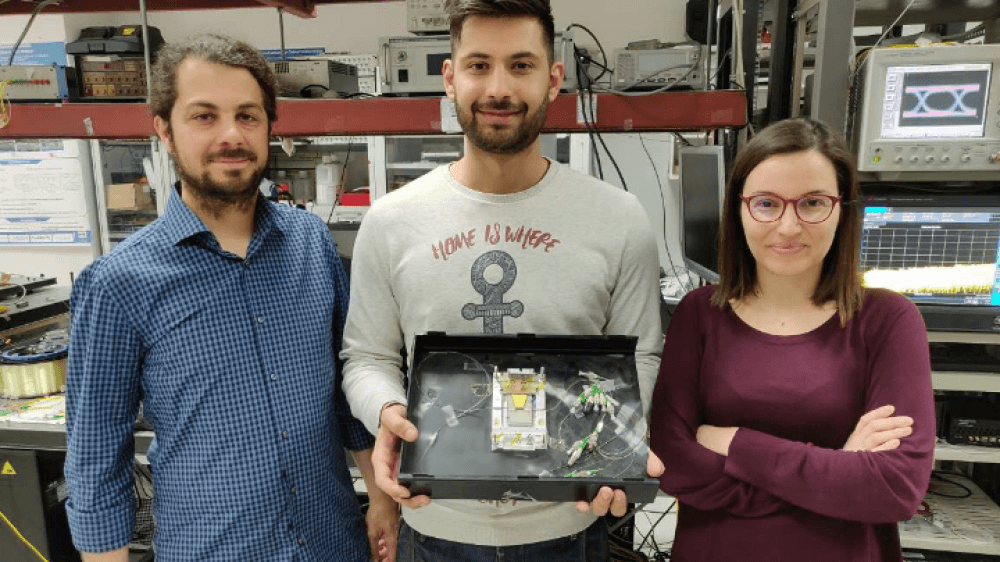The fastest RAM in the world, which stores light instead of electricity, managed to create members of the Aristotle University of Thessaloniki’s Research Group of Wireless and Photonic Systems and Networks (ERAFOS). Researchers replaced the electronic memory with a corresponding Random Access RAM that supports 10Gb / s data read and write speeds (up to 10 billion bits in a second), achieving twice the speed of the fastest electronic RAMs built by world-renowned IT companies such as Intel and IBM!
The research team consists of Dr. Christos Vagiona, Dr. PhD candidate Apostolis Tsakrididis, Assistant Professor of the Department of Informatics of the Aristotle University of Thessaloniki, Nikos Plexos and Associate Professor of the Department of Informatics of the Aristotle University of Thessaloniki, Amalia Miliou.
The study was published in the authoritative journal “Optics Letters” (DOI 10.1364 / OL.44.001821), one of the largest scientific journals in optical technologies, published by the Optical Society of America. In addition, the international scientific journal “Optics and Photonics News magazine” published an extensive article and hosted an interview with Dr. H. Vayona.
The scientific achievement, which is a product of a long-term effort of the AUTh research team that started in 2009, solves a long-standing problem of computers, also known as the “Memory Wall”. According to this, the random access RAM speeds increase for more than 30 years at a much slower rate than the corresponding processor speeds, resulting in an ever-increasing gap between processor performance and RAM, as the processor it will have to “wait” to receive data from the slow memory, so it can not process it quickly and delay the other processes.
The “heart” of the RAM consists of fast optical switches, the equivalent of electronic transistors in photon technology, interconnected in a standard two-state optical array, “0” and “1”, while a third optical switch controls whether the Reading or Recording function is performed. As the light can not be “encased” spatially and consequently stored as easily as possible in electrons and electronic memories, the research team has developed a technique that exploits two interdependent but different wavelengths: when the a wavelength dominates within the proposed memory device, then causes the other to remain off, thus assigning digits 1 and 0 to two different wavelengths, digital storage is achieved.
In the future, even better performance is expected, as the research team intends to study higher-capacity optical memories with multiple memory cells that exploit the different wavelengths of light.
The innovative research ideas of the AUTh team are funded by the Hellenic Foundation for Research and Innovation (ELIDEK) and the General Secretariat for Research and Technology (GSRT) through the CAM-UP research projects (“Optical Content Access Memory for Fast Search Management” Scientific Coordinator Dr. Christos Vayonas) and ORION (“Random Access Low Voltage Optical Memories for Rapid Response and High Rhythm Performance in Computational Environments”, Scientific Coordinator Dr. Theonis Alexoudi).
The Research Group on Wireless and Photonic Systems and Networks (ERFAF) was established in 2015 in the framework of the operation of the Center for Interdisciplinary Research and Innovation (KEDEK) of the Aristotle University of Thessaloniki, whose main mission is to promote and develop interdisciplinarity in one open and collaborative environment of excellence. The team comes from the research team of Associate Professor Nikos Pliros and Assistant Professor Amalia Miliou from the Department of Informatics, Assistant Professor Konstantinos Virsokinos from the Department of Physics and Professor Leonidas Georgiadis from the Department of Electrical and Computer Engineering.






